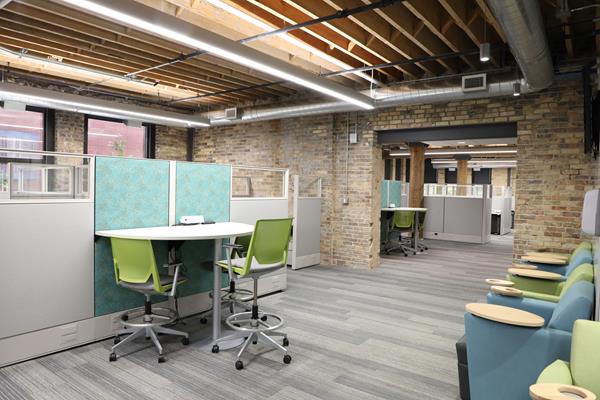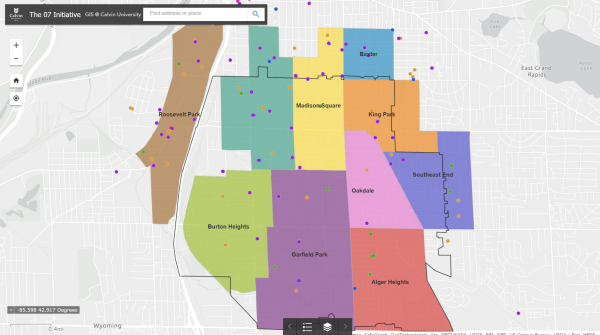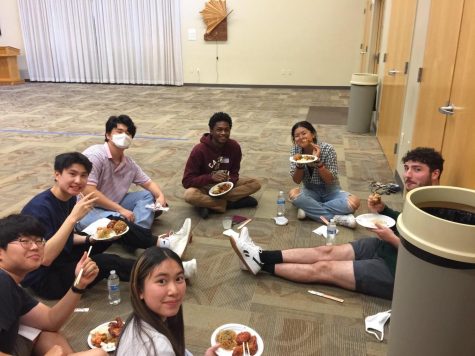Calvin students serve at 13th annual Grand River cleanup
Last weekend, around 30 Calvin students spent their Saturday morning picking trash out of the Grand River’s surrounding banks. The students, members of Calvin’s Environmental Stewardship Coalition, joined approximately one thousand community members at Sixth Street Bridge Park for the annual Mayor’s Grand River Cleanup, which is organized by the West Michigan Environmental Action Council (WMEAC).
After a light breakfast and brief speeches from Grand Rapids Mayor Rosalynn Bliss and the mayors of Grandville and Walker, the volunteers split into groups and bussed out from the park to stretches of riverbank across Grand Rapids.
Calvin students Nate Jansen and Andrea Van Engen were sent with the rest of the Environmental Stewardship Coalition to work on a section of Plaster Creek in the Alger Heights neighborhood.
“We found everything from a dead baby pig, which we originally thought was a decaying fish, but soon realized was a piglet, to a swiffer sweeper, a basketball, a hatchet, a needle, and lots of foam and plastic,” said Jansen. “The fact that we found a decaying pig along with an assortment of general garbage proved just how nasty Plaster Creek can get.” Most of this debris had piled itself into shallow banks caused by log jams in the river.
Jansen described some of the challenges of the cleanup. “Many of our crew scrambled on fallen limbs over the stream to gather garbage. … The work was hard and we were always a slip away from being really wet.” That being said, Jansen emphasized that he “had a blast and would do it again in a heartbeat.”
After two and a half hours spent picking up litter, volunteers gathered back at the park for a free pizza lunch and beer provided by Founder’s.
The mayor of Grand Rapids has hosted the annual cleanup since 2004. This year, Mayor Rosalynn Bliss emphasized that the river cleanup is part of a larger project to renew both infrastructure and ecology in the city’s center. In an interview with Rapid Growth Media, Bliss said, “The cleanup is key to our community’s plan to transform the waterfront into a ten mile river edge recreational trail that reconnects citizens to the riverfront.” In her address to volunteers, Bliss hoped that in five years, volunteers would be cleaning up a river in its natural state, rapids and all.
Van Engen thought her time cleaning the river was well spent. “It was good to do something that’s good for everyone.” Two hours of labor may not have drastically transformed the river, but as Van Engen put it, “Maybe we cannot see the difference, but there is a difference.”







